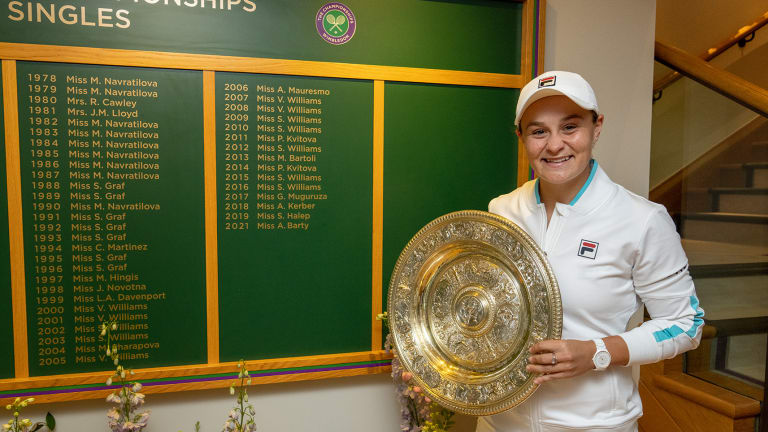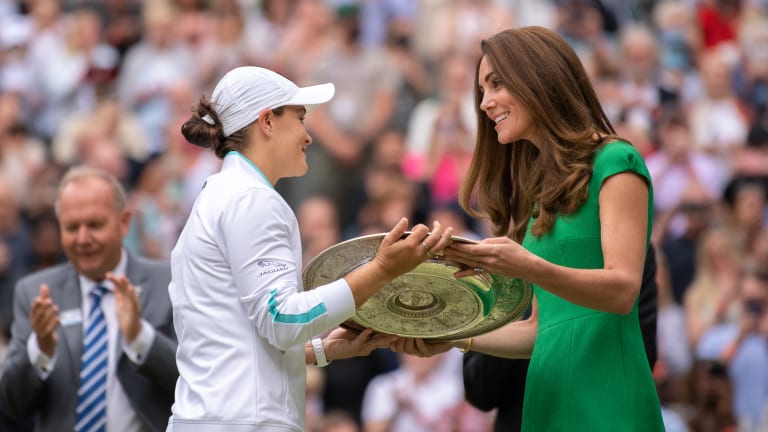Wimbledon
A rich tradition renewed: Ash Barty joins gallery of Australian greats to win Wimbledon
By Jul 10, 2021Wimbledon
Wimbledon to replace line judges with electronic line calling from 2025
By Oct 09, 2024Wimbledon
The amazing journey of Henry Patten from IBM data logger to Wimbledon doubles champion
By Jul 16, 2024Wimbledon
Hsieh Su-Wei, Jan Zielinski win mixed doubles title at Wimbledon
By Jul 15, 2024Wimbledon
Why Wimbledon Endures
By Jul 15, 2024Wimbledon
Novak Djokovic seeks 2024 answers for Alcaraz and Sinner after great effort: 4 ATP Wimbledon takeaways
By Jul 14, 2024Wimbledon
Carlos Alcaraz is a champion establishing how high he will climb with latest Wimbledon title
By Jul 14, 2024Wimbledon
Nicolai Budkov Kjaer makes history in winning junior boys' Wimbledon title; Renata Jamrichova wins girls' title
By Jul 14, 2024Wimbledon
Carlos Alcaraz beats Novak Djokovic again in Wimbledon final for fourth Grand Slam title
By Jul 14, 2024Wimbledon
For Jasmine Paolini, Barbora Krejcikova was one forehand and one serve too good in the Wimbledon final
By Jul 13, 2024Wimbledon
A rich tradition renewed: Ash Barty joins gallery of Australian greats to win Wimbledon
“She doesn’t worry at all. She just goes out there and plays,” Rod Laver told TENNIS.com after the world No. 1 defeated Karolina Pliskova in Saturday's final at the All England Club.
Published Jul 10, 2021
Advertising
Advertising

Barty won the first three-set ladies' final at the All England Club in nine years.
© 2021 Getty Images
Advertising

A royal handoff: Barty received the Venus Rosewater Dish from Catherine, Duchess of Cambridge.
© FREE FOR EDITORIAL USE. This image is offered licence free for editorial use only by the AELTC. It can be published on all platforms and can be archived. Copyright of All England Lawn Tennis Club. Commercial use is prohibited. ©AELTC/Ben Solomon